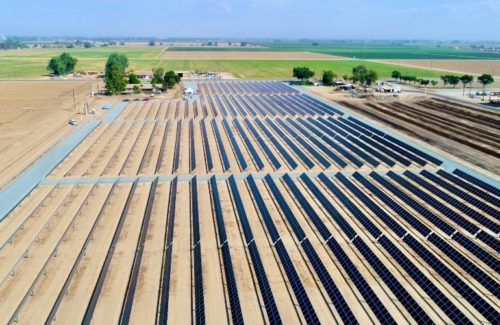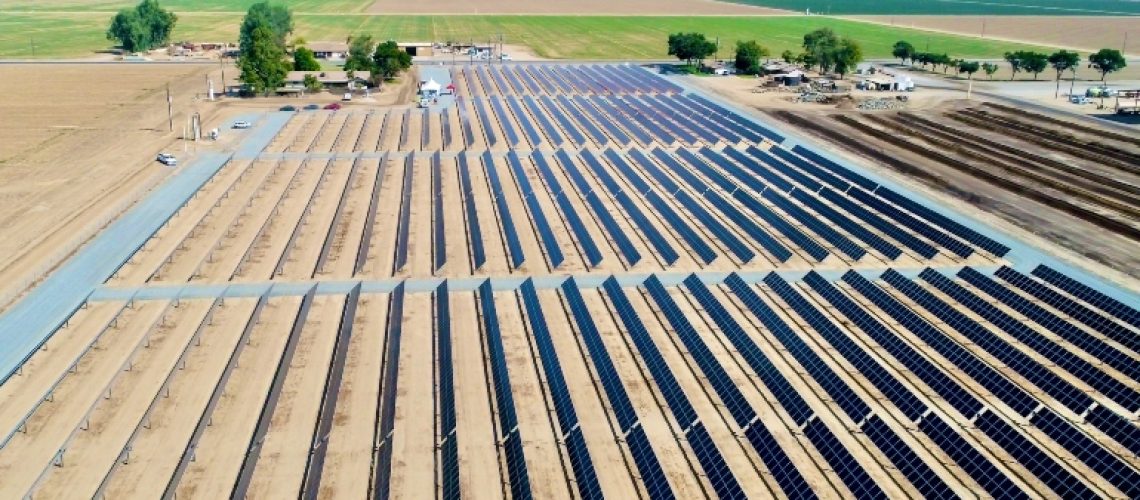
Credit: Solar FlexRack
According to a review by the SUN DAY Campaign of data recently released by the Federal Energy Regulatory Commission (FERC), renewable sources accounted for more than two-thirds of the new U.S. electrical generating capacity added during the first six months of 2022.
Wind (5,722 MW) and solar (3,895 MW) provided 67.01% of the 14,352 MW in utility-scale (i.e. > 1 MW) capacity put into service during the first half of the year. Additional capacity was provided by geothermal (26 MW), hydropower (7 MW) and biomass (2 MW). The balance came from natural gas (4,695 MW) and oil (5 MW). No new capacity was reported for 2022 from either nuclear power or coal.
New capacity reported in June alone includes the 200-MW Heartland Divide Wind II Project in Iowa and the 145-MW Panorama Wind Farm in Colorado. New solar generation is being provided by the 250-MW Athos Solar Energy Project in California and the 149-MW Big River Solar Project in Illinois as well as the 137.5-MW Nebula Solar Project and the 108-MW Emerald Grove Solar Project, both in Texas.
These recent additions bring renewable energy’s share of total U.S. available installed generating capacity up to 26.74%. For comparison, five years ago, renewables’ share was 19.70%. Ten years ago, it was 14.76%.
FERC foresees strong solar and wind growth in the near-term
Perhaps more dramatic are the trend lines indicated by FERC data for the next three years, through June 2025.
FERC reports that there may be as much as 192,507 MW of new solar capacity in the pipeline with 66,315 MW classified as “high probability” additions and no offsetting “retirements.” The “high probability” additions alone would nearly double utility-scale solar’s current installed capacity of 74,530-MW while successful completion of all projects in the pipeline would nearly quadruple it. Notably, FERC’s forecast predates Congressional approval of the Inflation Reduction Act which could super-charge solar’s growth.
In addition, new wind capacity by June 2025 could total 70,393 MW with 17,383 MW being “high probability” and only 158 MW of retirements expected. Thus, installed wind capacity could grow by at least 12% and possibly by much more.
“High probability” generation capacity additions for utility-scale solar and wind combined, minus anticipated retirements, reflect a projected net increase of 83,540 MW over the next three years, or over 2,300 MW per month. That figure does not include new distributed, small-scale solar capacity or additions by hydropower, geothermal and biomass.
Prospects for natural gas take a nosedive
Possibly more startling is how little net new natural gas capacity FERC anticipates being added over the next three years — just 4,319-MW. That is less net new gas capacity by June 2025 than the new gas capacity that was added in the first half of 2022. For perspective, in June 2019, FERC had foreseen 21,679 MW of net new natural gas additions in the three-year pipeline. The newly reported sharp drop in natural gas pipeline projects suggests a major reversal for its future prospects.
If just FERC’s latest “high probability” projections materialize, by June 2025, renewable energy sources would grow from a bit over a quarter today to nearly a third (31.79%) of the nation’s total available installed generating capacity. Utility-scale solar and wind generating capacity would expand from 17.15% of domestic capacity today to 22.64% by mid-2025 with solar and wind accounting for 10.68% and 11.96% respectively, or close to a quarter (22.64%) combined.
Meanwhile, natural gas’ share would contract from 44.23% today to 42.37% by June 2025. If current trends continue or — as seems likely — accelerate, renewable energy generating capacity should overtake that of natural gas by 2030, if not sooner. Moreover, coal’s share of the nation’s generating capacity would fall from 17.66% to 15.10% by mid-2025 while that of nuclear power would decline from 8.17% to 7.84%.
“With each new monthly “Infrastructure” report from FERC, the prospects for renewable sources, especially solar and wind, brighten while those for natural gas, coal, and nuclear power continue to slide,” noted the SUN DAY Campaign’s executive director Ken Bossong. “By the end of this decade, the mix of renewable energy sources should constitute the largest share of the nation’s electrical generating capacity.”
News item from the SUN DAY Campaign



